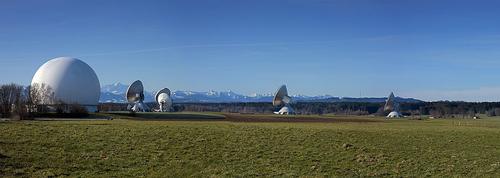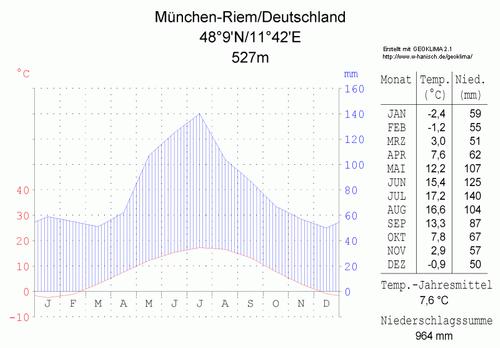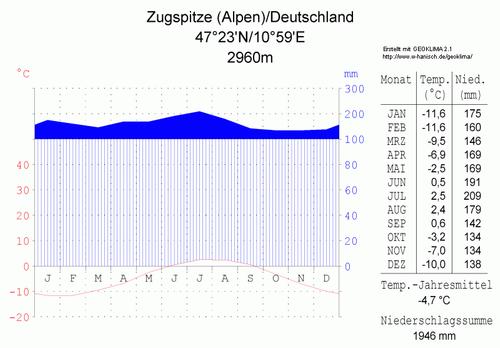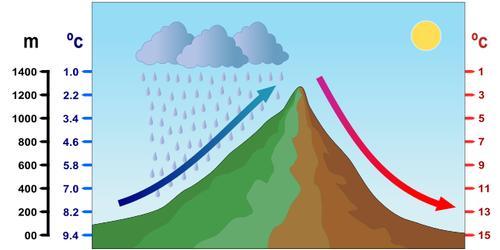BAVARIA
Climate and Weather

Climate and Weather

Cities in BAVARIA
| Munich |
Popular destinations GERMANY
| Bavaria |
Climate and Weather
 Satellites in BavariaPhoto: Richard Bartz CC 2.5 Generic no changes made
Satellites in BavariaPhoto: Richard Bartz CC 2.5 Generic no changes made
Bavaria has a temperate, mild climate that is heavily influenced by ocean disturbances and the accompanying westerly winds. But a continental climate from the east and an alpine climate in the Alps also have their influence. July is the hottest month with average temperatures between 21-23 °C, January can be quite cold with average temperatures ranging from -5 °C to -11 °C. In higher areas, the average temperature is a bit lower and the weather can change quickly.
Precipitation falls in all seasons, but in summer most precipitation falls in short, violent thunderstorms. In an autumn month like October, on the other hand, it can often be very pleasant weather without too much rainfall.
 Climate diagram of former Riem airport in MunichPhoto: Hedwig in Washington CC3.0 Unported no changes
Climate diagram of former Riem airport in MunichPhoto: Hedwig in Washington CC3.0 Unported no changes
 Climate diagram ZugspitzePhoto: Hedwig in Washington CC 3.0 Unported no changes
Climate diagram ZugspitzePhoto: Hedwig in Washington CC 3.0 Unported no changes
A common weather phenomenon in Bavaria, especially in the spring and autumn, is the 'föhn', a warm fall wind that blows north from Italy across the Alps and causes rapid temperature changes. The sky rises on the south side and descends again on the north side. On takeoff, the air cools and loses a lot of moisture, which can be rain or snow. When descending, the air heats up twice as quickly. The last moisture and dust then disappears and the air is extremely warm and clear at that time. Usually, the foehnr in Bavaria is limited to the Alpine region and cannot reach the capital Munich. Moreover, in the winter period cold air covers the city like a heavy blanket and it is impossible for the warm foehn to reach Munich, a so-called state of inversion. The only thing that can break this condition is when the wind picks up strongly. When this situation arises, it is often sunny in the mountains and very pleasant in terms of temperature; at the same time it is gloomy, cloudy and misty weather on the flat land. If the foehn is strong enough, it can penetrate to Munich and the weather at that time is sunny with a very clear view but a lot of wind. In only about 20% of the real föhn winds, the warm downwind reaches Munich and it is significantly warmer in the streets of Mönchen, in all other cases meteorologists speak of föhn-like effects.
Sometimes the warm Föhn wind comes from much further away than Italy, for example directly from the Sahara. That wind already reaches the Alps at a great height, so it no longer needs to rise and the weather on the south side of the Alps is fine.
The reverse path also occurs when the wind blows from the north across the Alps. The consequences are of course different, but the principle remains the same as with the foehn. On the north side of the Alps, moist air collects and causes rain. On the south side there is then a cold fall wind, which is called 'bora' in the Balkans and 'mistral' in France.
 Effect föhn on TemperaturePhoto: Kes 47 in the public domain
Effect föhn on TemperaturePhoto: Kes 47 in the public domain
Sources
BBC - Country Profiles
CIA - World Factbook
Di Duca, Marc / Munich, Bavaria & the Black Forest
Lonely Planet
Egert-Romanowska, Joanna / Duitsland
Van Reemst
Meyer, Marion / Beieren
ANWB
Oberbayern : bayerisches Alpenvorland
Baedeker
Wikipedia
Copyright: Team The World of Info